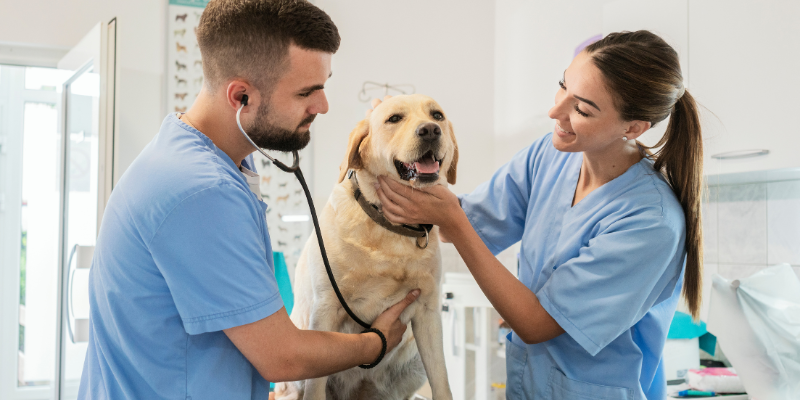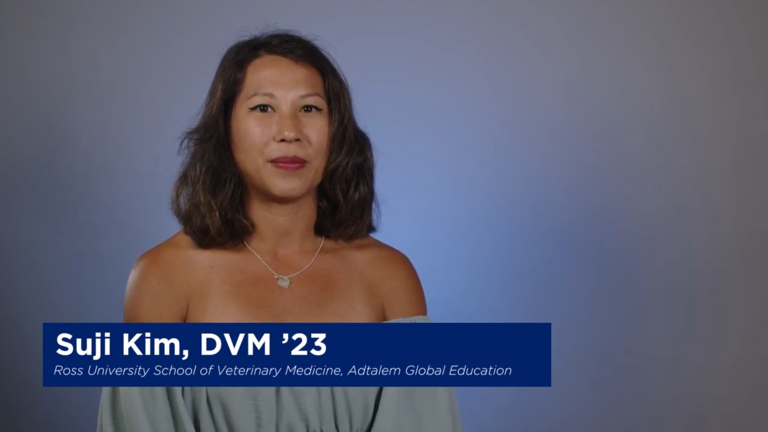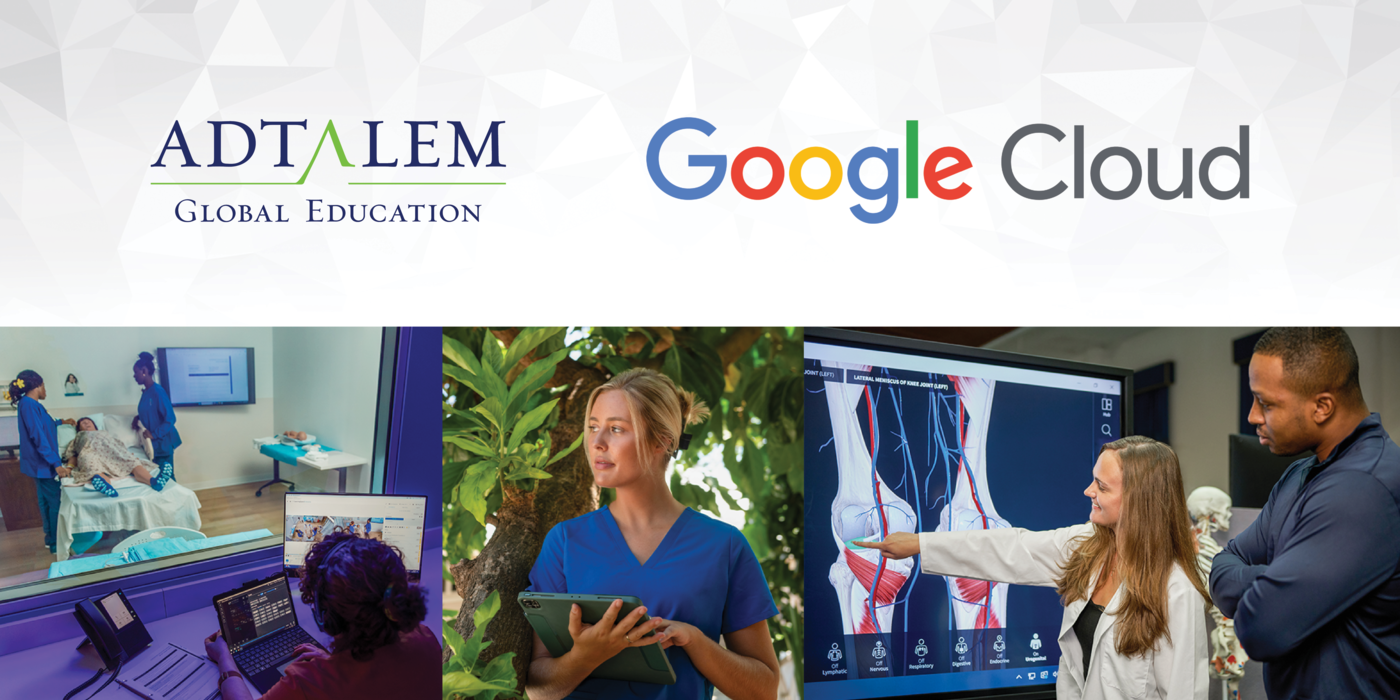From dental care for dogs to course development, future veterinarians at Adtalem are helping improve how they learn to be caring healthcare providers.
If you have a dog more than two years old, there’s an 87% chance your furry companion has periodontitis. Gum disease in dogs and other small animals causes more than bad breath. It can lead to pain, tooth loss, and problems with major organs like the heart and kidneys.
The scale of the problem makes dental skills crucial for veterinarians and their patients. Clinics expect newly hired veterinary graduates to perform dental work on day one.
It’s all laid out in a recent scientific paper by Dr. James Fairs, faculty member at Ross University School of Veterinary Medicine (“Ross Vet”) and his colleagues. The paper details research done with Ross Vet students to determine how best to prepare them for the dental needs of clinics and their patients.
"The Evaluation of a High-Fidelity Simulation Model and Video Instruction Used to Teach Canine Dental Skills to Pre-Clinical Veterinary Students,” Multidisciplinary Digital Publishing Institute Veterinary Medical Education: Challenges and Perspectives.
says Dr. Fairs. “The basic skills associated with small animal dentistry are not especially challenging if they are taught effectively and appropriately.”
Their research asks, which is better to aid instruction: videos or highly accurate simulated dogs?
Students who practiced on models learned more and were more confident than those who only had the videos. To optimize skill acquisition, Ross Vet is now using both. Students will get nine hours of classroom learning, a dental module in the small animal medicine curriculum, and three hours with the models focused on skills training—obtaining oral dental radiographs, scaling and polishing teeth, extracting teeth, and charting in a lab setting.
says Dr. Fairs.
To validate the use of the canine models, Dr. Fairs and his colleagues recruited more than 100 students to try them in the lab and then complete an exam and a survey. “The models were resoundingly well received by the students,” says Dr. Fairs.
“At Ross Vet there is a great emphasis on learning dental skills,” says Dr. Fairs. “It’s part of our outstanding clinical skills department, which includes many different types of simulated experiences that we are continually enhancing with input from students.”
In addition to finding new ways of learning, Dr. Fairs hopes that by participating in research, students will be inspired to conduct their own.
Promoting Faculty Development
A student was part of the research team for another recent project at Ross Vet. As a student council representative, Suji Kim, DVM ’23, participated in a taskforce on assessing teaching practices. The research, "Critique of Approaches for Evaluating Teaching and Proposal for a New Institutional Policy,” led by faculty member Dr. Kerry Rolph, was published in the Journal of Veterinary Medical Education.
The article explores the history—and flaws—of student evaluations of educators.
says Dr. Rolph. “Some studies say if we give out chocolate biscuits at the same time as a student evaluation, that can improve faculty scores.”
The article then pivots to the system Ross Vet is adopting, one that combines student evaluations of courses, faculty self-reflection, and observation by faculty peers. Student evaluations focus on the course itself with questions about whether it was engaging, informative, and challenging, as well as if they were motivated to put effort into the course.
says Dr. Rolph. “She was brilliant to work with.”
What Inspired Suji Kim to Become a Veterinarian
For more information, email the Adtalem Global Communications Team: adtalemmedia@adtalem.com.




